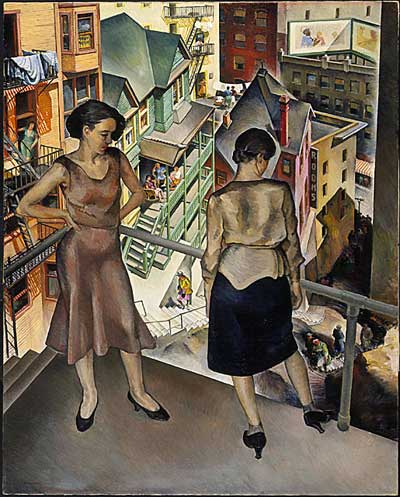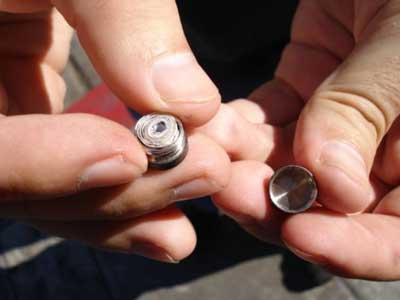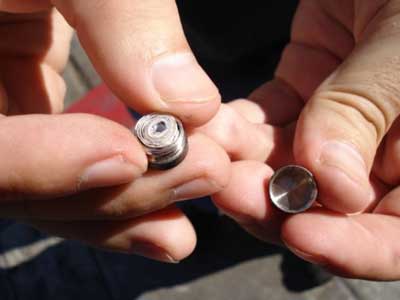Recently I was introduced to geocaching. It's a simple premise: to find cleverly hidden "caches" with global coordinates as your main clue. Caches usually contain a logbook and are hidden worldwide. Ranging in size, they can be as large as Tupperware containers or as small as a box of mints, or even minuscule enough to look like a bolt. Handheld GPS navigators are extremely helpful—but beware! The caches in urban areas tend to be extremely well-disguised, and some nanocaches like these are quite inconspicuous:
In one afternoon I explored various parts of downtown L.A., finding quaint gardens and parks sprawled in between massive skyscrapers. One of my favorite caches that day was located near the funicular Angels Flight, said to be the world's smallest railway. I stared down from the platform, and Millard Sheets's eponymous work immediately came to mind.

Millard Sheets, Angel’s Flight, gift of Mrs. L. M. Maitland
In his painting, Sheets depicted his own impression of the Bunker Hill area by adding additional characters in the background, playing with the perspective of the hilly turf, even removing the funicular and replacing it with a meandering staircase that emphasized the steep trek of those who typically could not afford the fare.
My geocaching experience was similar to the viewers of Sheets's painting. As I looked out that afternoon, I saw lovers in the park, men on benches warmed by the sun, and people walking their dogs—everyone was enjoying the lovely weather of the day. Essentially, like those who view Angel's Flight, I got a charming peek into Bunker Hill as I hunted for the cache, no doubt the intent of the geocacher who cleverly hid it.
Devi Noor, Curatorial Administrator, American Art
Stay tuned tomorrow for more on Millard Sheets...





